Sustainability City in Minecraft: Education Edition
28 Jul 2021

Microsoft has a 10-year strategy to become carbon negative, water positive, zero waste, and develop a planetary computing platform (you can read all about it here). To help students learn and explore these sustainable processes, Minecraft: Education Edition introduced six new lessons inside a brand-new world: Sustainability City.
To celebrate Earth Week, teachers and students were invited to explore these new lessons together in virtual events, facilitated by The Cobblestone Collective, around the components of a sustainable home, managing waste products, clean electricity generation, and responsible forestry. We heard from industry experts (like a West Coast Logger and a Prairie Farmer) on how their own processes help create a sustainable world. We then dove into Sustainability City in Minecraft: Education Edition and put what we learned into a build. Students were then invited to participate in the Flipgrid Design Challenge, six unique building challenges based on the key concepts learned through their exploration of Sustainability City. The winners were notified on June 4th.
The Six Lesson Topics, Build Challenges, and Challenge Winners:
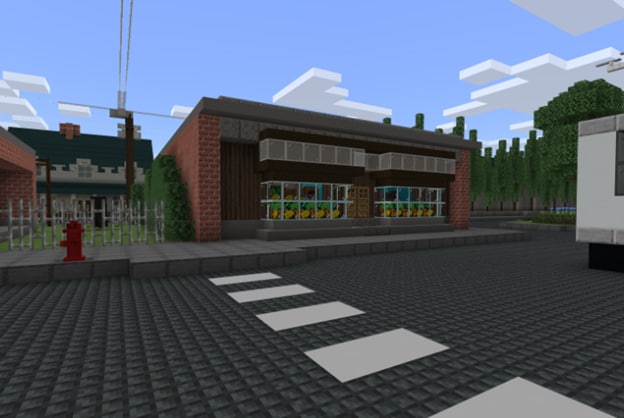
Beginning at the town’s grocery store and ending at a honey stand, students explore sustainable practices for every step of food production. By visiting a farm, a waste facility, and a recycling plant, they’ll learn that the food they purchase is made up of multiple products and services, and each should be sustainable.
For this build challenge, students needed to build a sustainable farm on a 65 X 65 block plot (1 acre) and show their understanding of sustainability by explaining how they would care for the farm.
The winning build for the Sustainable Food Production challenge was from Cheyne Middle School, Peel District School Board. Congratulations to Dhruv, Krish, and Shreyas! Inside their build, the team included an automated farm powered by a hydroelectric dam with a glass roof to contain heat. The farm also included silos, a barn, and an eco house with a green roof, powered by wind and hydroelectric energy.
Check out their submission here.
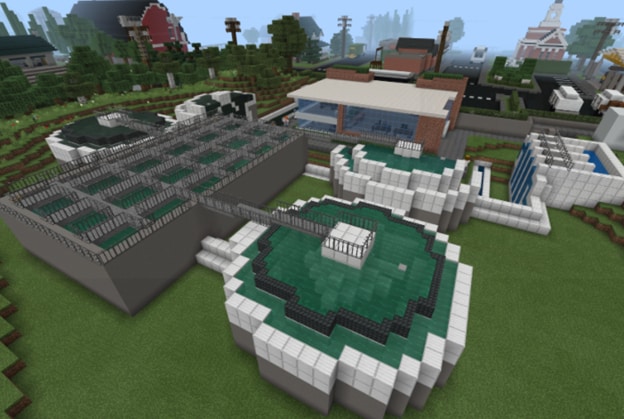
In this lesson, students will learn about the mysterious world of water treatment and water outflow. They’ll discover how water gets from their drains to the treatment plant, how biosolids contribute to fertilizer, and how treated water returns to their homes.
For this build challenge, students needed to create a mini-purification system including all six steps of the outflow process.
The winning build for the Outflow Order challenge was from DA Morrison Middle School, Toronto District School Board. Congratulations to Jacob! Using minimal resources, Jacob created a water treatment system and guided the viewer through each step of the process.
Check out the submission here.

Learners visit the local recycling plant, then explore the landfill and waste-to-energy plant. Through these experiences, they’ll find out what materials are recyclable and what happens to materials that aren’t. Students will also learn about energy generation with recyclable material and sustainable landfills.
For this build challenge, students were tasked with making a statement in the Minecraft: Education Edition world by using the resources available to create a sculpture that would remind people of sustainability.
The winning build for the It’s Good to be Green challenge was from J. W. Alvey Elementary, Prince William County Public Schools. Congratulations to Adeline! Adeline created multiple sculptures out of recycled materials, sculptures to house seeds and chickens, a rainbow, flowers to attract bees, rain barrels to water the flowers, and a bench made from recycled metal.
Check out the winning submission here.
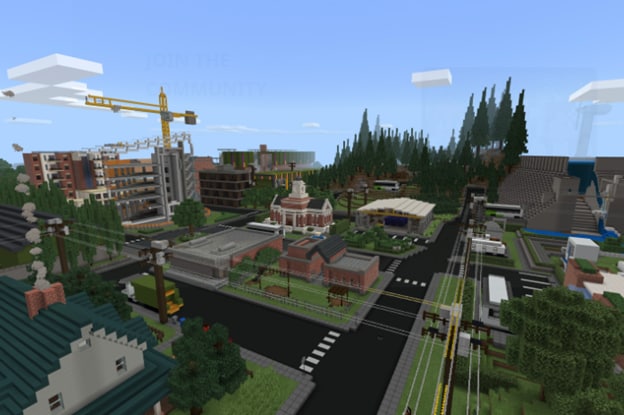
Students step into a sustainable forest, starting at a lumberyard where they’ll see stored lumber intended for buildings, paper, or yard material. Then they hike into the woods to see what a 40-year sustainable forest cycle looks like. The journey continues down a trail where learners encounter a conservationist and a local hiker. Throughout their trek, students will come to understand the social, economic, and environmental impacts of responsible forestry.
For this build challenge, students need to design and grow a scenic hike through a dependable forest for future generations to use and enjoy. The challenge asked students to build either 25x25 (area of 625 m²), 50x50 (area of 2500 m²), or 100x100 (area of 10,000m²) block forests and include a variety of trees for biodiversity, along with different elevations.
The winning build for the Dependable Forests challenge was from Waverley Drive Public School, Upper Grand District School Board. Congratulations to Alex! Alex included four types of trees for biodiversity and included ground level and treetop walkways through the forest.
Check out the winning submission here.
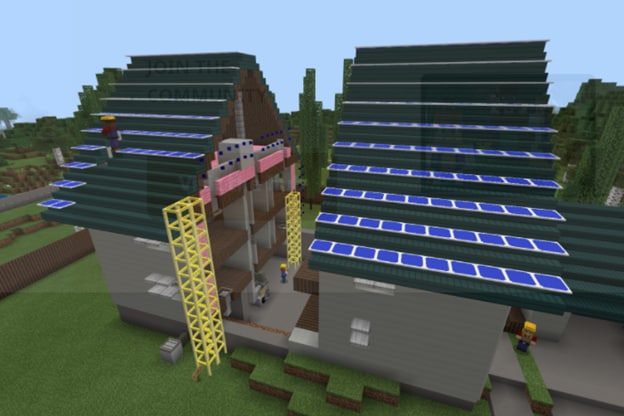
This lesson visits a home built using sustainable materials and explores the features that contribute to efficiency. Students make connections with other areas of the city where the house’s materials originate. Throughout the experience, they’ll come to understand the complexities of creating a sustainable home and what they can do to contribute to energy efficiency.
For this build challenge, students were asked to design and build an Eco/Sustainable Home supporting sustainable living. The challenge asked students to use sustainable materials, renewable energy sources to power their home, and consider other methods of saving energy such as natural light, insulation, and green rooftops.
Two teams won in the Sustainable Home challenge, and they were both from Julia Landon College Prep, Duval County Public Schools. Congratulations to Gabby and congratulations to Ani, Aryan, and Pranav!
Gabby’s home was built out of sustainable materials and runs off of solar power. The house also includes a car charger and a green rooftop with compost and rain barrels, along with a sitting area. Check out the winning submission here.
Ani, Aryan, and Pranav made their house run off of solar power and included a car charging port in their garage. They included non-player characters in their house to talk about different aspects of their build, including an interior designer and an electrician. Check out their winning submission here.
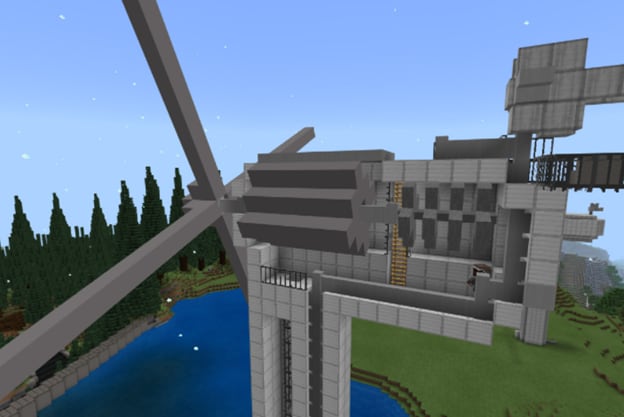
Students begin their exploration at a hydropower plant, learning how it works from friendly non-player characters. Once they‘ve passed through the plant, they climb a ladder to explore wind power and even have a chance to restart one of the turbines for the plant’s workers! Finally, learners hop into a minecart to travel the power lines and see how the plant powers the entire city.
For this build challenge, students were asked to build the next electric bus for schools around the world. Students were tasked with using sustainable building materials, along with different sources of renewable energy to power their bus.
The winning build for the Alternative Energy challenge was from Rainbow Elementary School, Seminole County Public Schools. Congratulations to Ian! Ian used solar panels to power the bus, a charging station to charge the bus at night, and a robot to greet people.
Check out the winning submission here.
CONGRATULATIONS to all of the winners!
We invite you to use the recorded co-taught lessons in your classroom to explore the 6 different sustainable processes within the Sustainability City with Minecraft: Education Edition lessons.
New to Minecraft: Education Edition in the classroom? Start exploring here. If you work in a camp, club, homeschool organization, non-profit, or another setting outside the traditional classroom, Minecraft: Education Edition is also available to your learners. Find out how.


